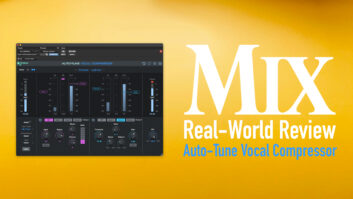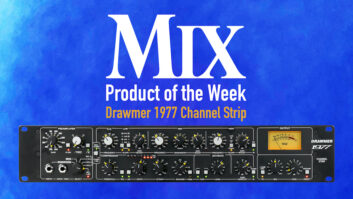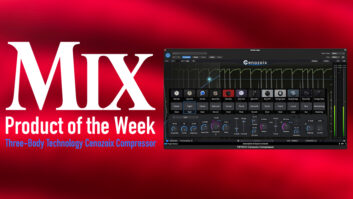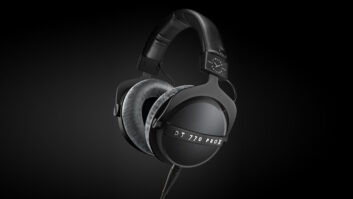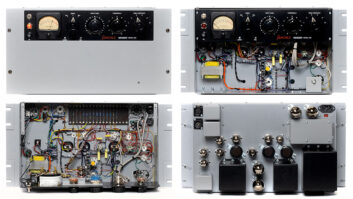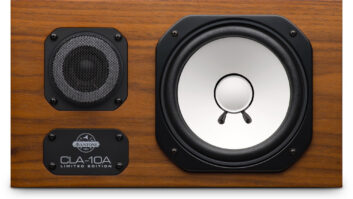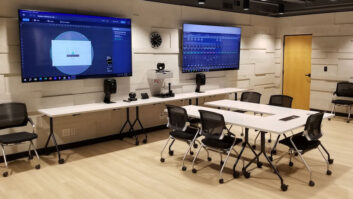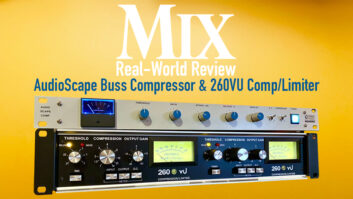
When a re-issue comes in for a review, I typically have one of two reactions. When the original version has issues, I hope that the redesign addressed those issues. When the original works just fine, I hope that the company didn’t screw anything up when it changed it. I’ve owned a Drawmer 1969 for a few years, so I was quite interested in seeing what changes were made in the 1968.
THE BASICS
The Drawmer 1968 is a single-rackspace unit that uses the same compression circuitry as the 1969: a FET-based gain-reduction element with a tube output stage. Each channel has threshold, attack and release knobs, as well as a Big switch and an output (gain makeup) control. The Big switch puts a highpass filter into the compressor circuit’s sidechain, making the compressor less sensitive to low-frequency components of the program signal. In addition to the built-in Big circuitry, the 1968 includes a TRS patch point on the rear panel that allows access to the sidechain for complete flexibility in frequency-dependent ducking and a Sidechain Listen function.
The 1968 can be operated in a “true stereo” mode: When the Stereo switch is engaged, channel 1 becomes the master and controls the compressor circuitry for both channels; only the output control of channel 2 is operational. When the same gain reduction is applied to both audio channels, no image shifting can occur. The illuminated VU meters on the 1968 can display either gain reduction or output levels, and a +10 setting has been added for those who tend to push compressors; essentially, by setting the meter to +10, 0 dB shows on the meter as -10, and +10 is displayed at 0 dB. Besides this, an LED warning system has been added, which causes the meters to glow brighter as the signal approaches the 1968’s maximum +22dB (balanced) output. It should be noted that the bypass switches on the 1968 are hard-wired: If the compressor loses power, then the signal will pass from the input to the output of the 1968. This is perhaps not a big issue for most of us, but it can be of major importance to those in the broadcast and live sound industries.
Attack times on the 1968 are controlled by a six-position switch and range from 2 to 50 milliseconds. There are three fixed release times and three that are program-dependent. The output of the 1968 can be raised (or lowered) by 20 dB with the output control. The 1968 is a soft-knee compressor so no ratio controls are necessary; the compression ratio is dependent on the amount of gain reduction taking place.
SO WHAT’S NEW?
The most visible change, of course, is that the 1968 is single-rackspace — tall rather than the two spaces taken up by the 1969. This is great for those with limited space available. Another nice feature is that the Big setting can be used on each channel individually; on the 1969, it was only available when using the unit in stereo mode. (I didn’t consider that an issue with the 1969 because I usually use it as a stereo compressor.) I also appreciate the changes that Drawmer has made to the meters on the 1968: In addition to a +10dB switch, as the output signal gets close to its maximum output, the meter flashes on the peaks.
HOW’S IT SOUND?
Overall, the 1968 sounds great. It’s not superfast, but it is certainly fast enough to deal with percussive transients. A fairly amazing amount of tonal change can be achieved, especially on signals such as a kick drum, with a judicious combination of attack times and the Big switch. I used the 1968 in the recording chain on a variety of signals with good success: bass, acoustic instruments such as fiddle and mandolin, and even on an accordion.
In a mixing situation, the 1968 kept a big, beefy sound everywhere I tried it. The 1968 and the 1969 have become my “go-to” compressors for the main drum bus. The 1968 works for mild gain control (in which the gain reduction was smooth enough to be virtually unnoticeable) and for fairly outrageous compression, complete with artifacts. That’s not a complaint, by the way. At the time, I was looking for that over-the-top sound; with the 1968, I found it. In addition to using the 1968 on the drum bus, I’ve used it to excellent effect on the keyboard bus, on the guitar bus and on grouped background vocals. I have gotten great results with it on the main mix bus on more aggressive music.
FINISH LINE
The 1968 has been hailed as a “stripped-down version of the 1969.” I didn’t consider it a stripped-down compressor at all — it’s more like a streamlined version. For those who (like me) don’t use the preamps or the aux input, a version that takes up half the space and costs a thousand dollars less (and offers some enhancements on top of that) seems to be an improvement and a relative bargain at $2,150.
Drawmer, dist. by TransAudio Group, 702/365-5155, www.transaudiogroup.com.
Martin Allen is a Nashville-based producer and engineer
.
